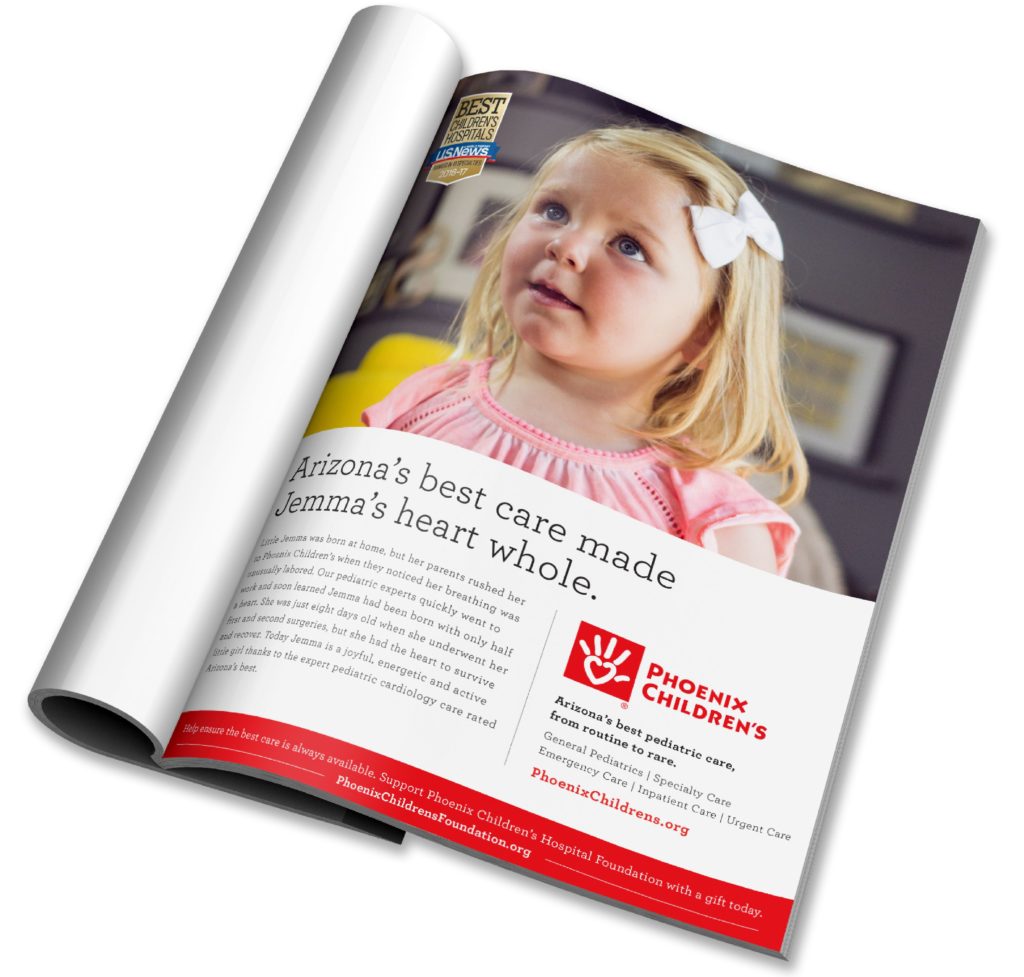Phoenix Children’s Hospital is home to Arizona’s largest group of pediatric specialists and is among the nation’s top facilities for inpatient, outpatient, emergency, trauma, and urgent care to infants, children, teens, and young adults ages 0–21. They also feature a Level 1 Pediatric Trauma Center, the only one in the state. But with hundreds of pediatric medical providers in Arizona, Phoenix Children’s enlisted ANDERSON to help position Phoenix Children’s as the pre-eminent pediatric healthcare leader and best care for children in the Southwest.
What We Did
STRATEGY
ACCOUNT PLANNING
Creative
Solution
Both strategically and creatively, the agency immediately identified the need to connect with audiences on an emotional level in order to build trust and empathy with the caretakers of children. To do this, we set out to capture real-life stories that would communicate the depth, breadth, and quality of care at Phoenix Children’s Hospital—through detailed accounts of how PCH helped patients get better and stay healthy after treatment.
Jemma Starks was one of the many patients ANDERSON chose to highlight in this campaign. Jemma was born with half a heart. At just eight days old, she underwent her first and second surgeries at Phoenix Children’s.
To highlight Jemma’s story (and others like her), ANDERSON created a full campaign that included print, television, online video, OOH, and digital ads. Video/television was leveraged heavily, using ANDERSON’s full in-house production and post-production services. For each shoot, we provided producers, camera people, wardrobe assistance, and more.
results
The campaign highlighting Jemma was so successful that the agency used the same formula to tell many stories of other children who were helped by Phoenix Children’s Hospital. One of those children was Riley Doot, who was born with Pectus Excavatum—a dent in his chest that put pressure on his heart and restricted lung capacity. Surgeons at Phoenix Children’s were able to correct the condition and Riley is now a happy, healthy teenager. Other children profiled had ailments ranging from common head lacerations and ear infections to extremely rare conditions such as Eosinophilic Esophagitis and Hypoxic Ischemic Encephalopathy.
The approach was extremely scalable, flexible, and cost-effective, allowing us to shine a light on all of Phoenix Children’s specialty areas including cardiac treatment, neurology, and orthopedics. By focusing on patient experiences, each in-depth profile deftly showcased exactly why Phoenix Children’s is the leader in the Southwest for pediatric care.
